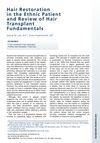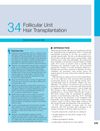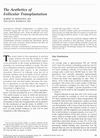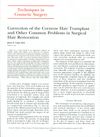Occipital Hairline: A Forgotten Area
November 2018
in “
Journal of Cosmetic Dermatology
”
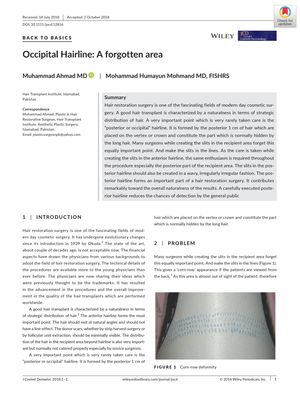
TLDR The conclusion is that surgeons should carefully create a natural-looking occipital hairline in hair transplants to avoid detection.
The document discusses the importance of the posterior or occipital hairline in hair restoration surgery, an area that is often neglected by surgeons. The occipital hairline is formed by the last 1 cm of hair on the vertex or crown, which is usually covered by longer hair. Surgeons frequently make the mistake of creating slits in straight lines in this area, which can result in an unnatural 'corn-row' appearance, especially when the hair is short, wet, or being cut at a barber's shop. The paper emphasizes that the same care and attention to detail that is applied to the anterior hairline should be extended to the posterior hairline, with slits created in a wavy, irregularly irregular fashion and the last 2 to 3 rows containing only single-hair follicular units. Additionally, the angle of hair shaft exit is crucial and should vary according to the area and shape of the skull. A well-executed posterior hairline is essential for the naturalness of hair transplant results and can significantly reduce the chances of the transplant being detected by the general public.


